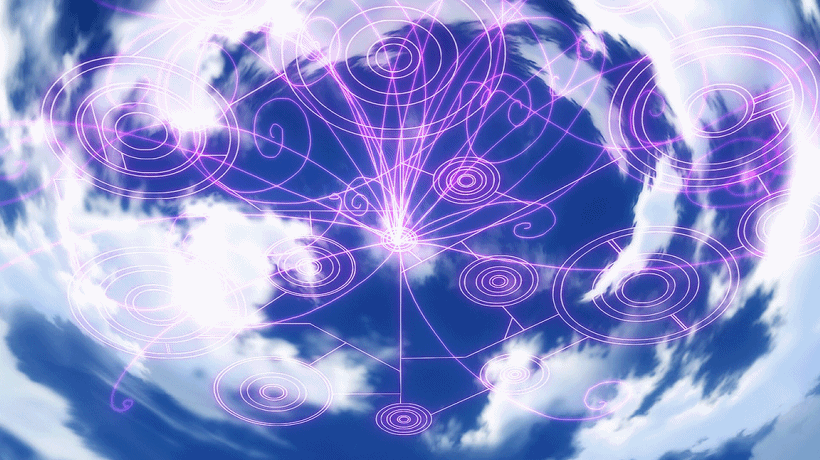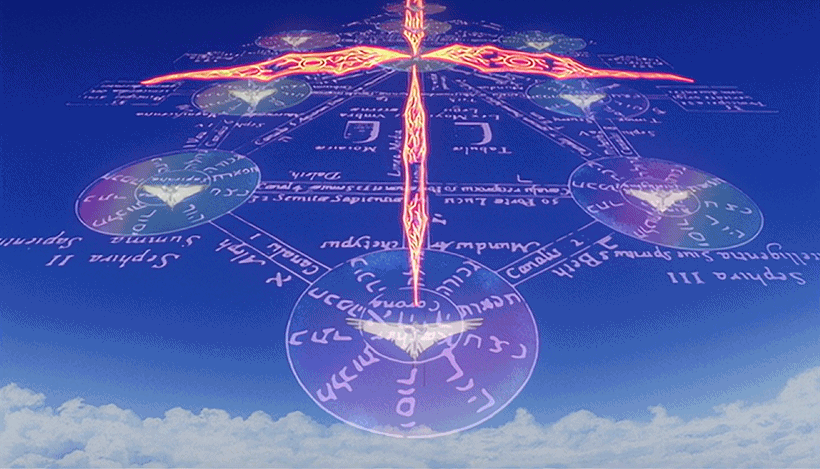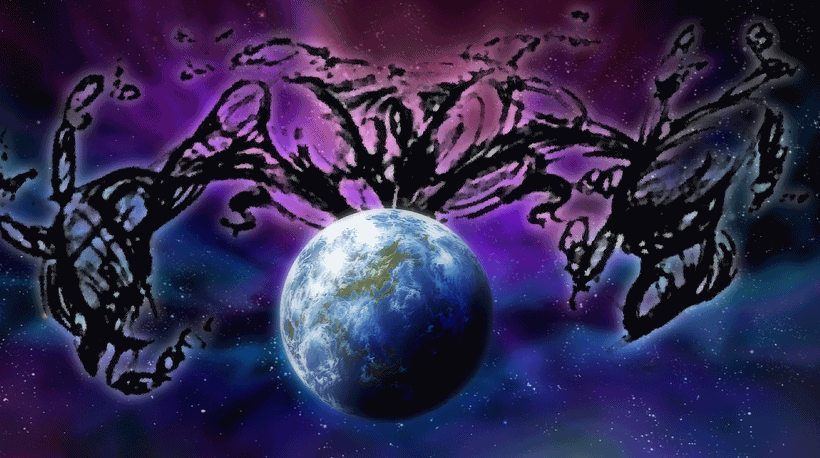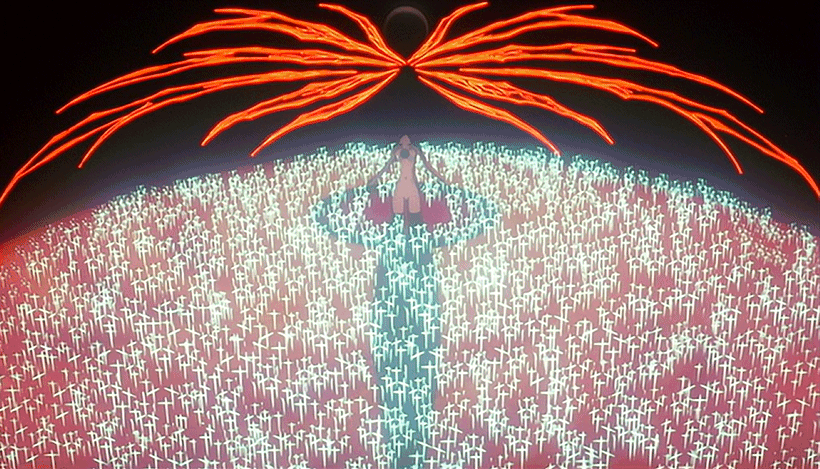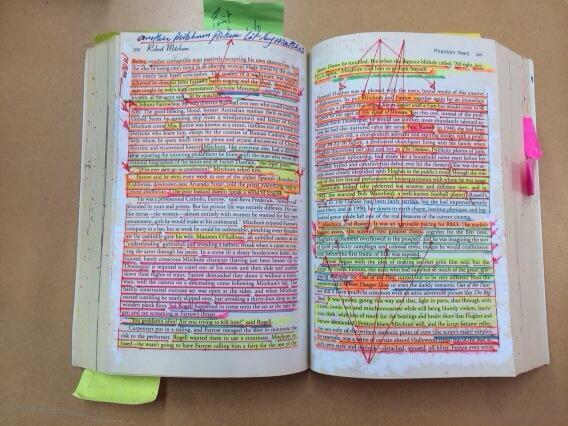Since I know nothing (Jon Snow) I can come up with the most absurd theories by just playing with patterns and generalizing them. And sometimes I even get some nice intuitions, whether revelatory or merely fun from a mythological perspective.
The fun part isn’t when you simply make whimsical associations, but when the whimsical associations actually get confirmed and produce more “sense” on their own. As if you merely try to see if a piece fits in the puzzle, and then it really does and tells you more than you were expecting.
So let’s make wild associations and see what fun comes out.
I watched an hour long video of a conference with Sean Carroll that I truly recommend because it’s one of those rare things that explain complex science while making it crystal clear (without losing too much precision, I hope). In this case it was an update on how science sees reality thee days, and the Higgs boson in particular:
https://www.youtube.com/watch?v=RwdY7Eqyguo
After that I went reading on his blog some more complex and convoluted stuff about quantuum fluctuations.
I really can’t follow that stuff well, but I try to focus on the macro patterns that seem to come out.
So, just for fun, I propose four different, totally gratuitous associations.
1- My interpretation of that blog post, or what it seems to come down, is that quantuum fluctuations don’t seem an intrinsic property of a field or object, but the result of an interaction. In this case observation. “what we call “quantum fluctuations” aren’t true, dynamical events that occur in isolated quantum systems. Rather, they are a poetic way of describing the fact that when we observe such systems”.
More specifically he explains:
It has nothing to do with consciousness or intelligence (of course). An “observation” in quantum mechanics happens whenever any out-of-equilibrium macroscopic system becomes entangled with the quantum system being measured. It will then decohere (become entangled with the wider environment), which causes a splitting of the wave function into separate branches.
That I transformed into:
it’s like I’m seeing the object a little different because it’s as if I look at it from a certain angle. If I change my angle of observation, then the object changes. So this “fluctuation” depends on the angle.
Or:
the macroscopic system has a kind of “imprint” that defines “where it comes from”. Like in science fiction usually is defined as a “vibration”, with parallel words having different vibrations or phases. So it seems you say that when an observation occurs, the entanglement happens because it’s the fingerprint of the macroscopic system that gives a peculiarity to the thing observed.
Here the pattern (if you’ve seen the video linked above): what if the “angle” of observation, or the branches that compose the multiverse, is dependent on the “height” of the Higgs field in respect to all the other fields? As if that field defines a particular wavelength that differentiates a world from the next. The fingerprint vibration.
I was just recently reading the “Otaku Tower” and it definitely had fun playing with these ideas. Here’s an actual quote (and first layer of actual mythology):
“We only know how things work in this world. We assume the workings of this world are absolute. But what if there were a great number of other worlds and it turned out the rules of this world are great exceptions compared to the other worlds?”
“But we do not know of any other worlds, so we can only assume they would be the same as us.”
A bitter smile appeared on Ooshiro’s lips when he heard that response.
“True,” the old man said. “But another world is another world. They are fundamentally different. What we think is simply ‘how things are’ and what the other worlds think is simply ‘how things are’ are fundamentally different.”
“Are you saying,” Sayama looked down at his feet, “there is a world where this is how gravity works?”
Ooshiro nodded, walked over to the opposite window, and stood on it. He looked straight up toward Sayama.
“The ten other worlds and this world are perceived as individual gears and so we refer to them as such. 1st-Gear through 10th-Gear all had their own unique characteristics. And do you know what we called this power of ‘how things are’?” Without waiting for an answer, Ooshiro said, “Concepts. We called them concepts! They are a power that can control even the laws of physics. They are the ultimate reason behind everything. That is what concepts are!”
—
“That was a Concept Text. It is made by gathering inferior reproductions of an extracted concept. Each individual concept is very weak, but it can be heard as a voice once it reaches the level of a Concept Text. This space also has several weaker concepts added on as well, but they cannot be heard as a voice.” He continued. “When an out of phase space has concepts added to it, it is known as a Concept Space. We think of a concept’s identity as a variable fixed-period vibration wave that we call a string vibration.”
—
Ooshiro had said an alternate world was a world with different concepts. In that case…
“So alternate worlds are worlds with different string vibration frequencies?”
“Yes. And everything in any of the worlds has a string vibration for their world and a string vibration for the object itself. The one for the world we call the parent string vibration and the one for the individual we call the child string vibration.”
Sayama nodded and said, “So is it like a numerator and denominator? The denominator tells you what Gear they belong to and the numerator tells you what the individual is.”
“Yes. If the numerator differs, it is a different individual. If the denominator differs, it may be the same existence but from a different world. These alternate worlds are not parallel. They exist in multiple phases atop each other. According to the records, a ‘gate’ that alters one’s parent string vibration is needed to move to and from different Gears.”
2- The second pattern is an association with the property of Free Will I defined in previous posts: the limited horizon that makes impossible to acquire knowledge to deny free will. This claim reveals already a pattern similarity: Bakker’s BBT. This formulation of Free Will relies of the impossibility of integrating knowledge. So integrating information. Bakker’s BBT is all about consciousness not being able to access (and so integrate) information. But I’ll get to this later, with its own patter.
In this case instead the pattern of a closed perspective seems to match a pattern in actual physics: Complementarity What was surprising for me was finding the concept actually /present/ in physics. Even if it’s applied to a different context, this concept exists. It’s actual, accepted science. What matches isn’t the details, nor it’s a way to use the murkiness of quantuum mechanics to imply some metaphysical properties. Nope. It’s the pattern. Sean Carroll brings it down to the ground again:
“For black holes, complementarity was taken to roughly mean “you can talk about what’s going on inside the black hole, or outside, but not both at the same time.” It is a way of escaping the paradox of information loss as black holes evaporate. You throw a book into a black hole, and if information is not lost you should (in principle!) be able to reconstruct what was in the book by collecting all of the Hawking radiation into which the black hole evaporates. That sounds plausible even if you don’t know exactly the mechanism by which happens. The problem is, you can draw a “slice” through spacetime that contains both the infalling book and the outgoing radiation! So where is the information really? (It’s not in both places at once — that’s forbidden by the no-cloning theorem.)”
I can’t really track and resolve the detail here, but there seem to be this idea of a limit, a horizon. My pattern-matching simply suggest that this could say something about the information horizon that defines Free Will in my formulation. Free Will is theoretically possible because information that proves it (Free Will) wrong can’t be accessed. It’s “either or”. Complementary information whose integration DEPENDS on the point of view. Where the point of view imparts authority, so reality.
3- Let’s now match this pattern to Kabbalah, because it’s hanging there, so close. The first association is the simplest possible. Science works with “information”, Kabbalah with “light”. It’s not even pattern matching, they are really just formulations of the same, light IS information, as we know.
What is physical reality according to Kabbalah (and also a bunch of other religions)? Concealed light. The upper world, where light is pristine, is spirituality, whereas the physical world, where light isn’t pure and is instead concealed, is Malkuth. The sephirot at the bottom of the tree. The Kingdom.
Why is there pain in the world? Answering with a non-answer: because the light is concealed, otherwise a pure light would be void of bad feelings or “wrongs”. This transforms into: why I feel pain? Because I’m not omniscient (I don’t know the reason of pain). Because all pain is justified as long it can heal. As long it leads somewhere better. As long there’s revelation at the end. As long it can be salved, left behind, and a life lifted to a better world. As long it’s revealed as just one part of a better whole.
Some quotes from a Kabbalistic text:
“42. Indeed, you should know that the reason for our great distance from the Creator and that we are so prone to transgress His will is for but one reason. It became the source of all the torment and the suffering that we suffer and for all the sins and the mistakes that we fail in.
Clearly, by removing that reason we will be instantly rid of any sorrow and pain. We will immediately be granted adhesion with Him in heart, soul and might.”
—
Thus, understanding His providence is the reason for every good, and the lack of understanding is the reason for every evil. It turns out that this is the whole axis that all the people in the world circle, for better or for worse.
—
4. Now you can understand the words of our sages about the verse, “therefore choose life.” It states: “I instruct you to choose the part of living, as a person who says to his son: ‘Choose for yourself a good part in my land.’ He places him on the good part and says to him: ‘Choose this for yourself.’” It is written about this, “O Lord, the portion of mine inheritance and of my cup, Thou maintainest my lot.” You placed my hand on the good fate, to say: “This take for you.”
The words are seemingly perplexing. The verse says, “therefore choose life.” This means that one makes the choice by himself. However, they say that He places him on the good part. Thus, is there no longer choice here? Moreover, they say that the Creator puts one’s hand on the good fate. This is indeed perplexing, because if so where then is one’s choice?
Now you can see the true meaning of their words. It is indeed true that the Creator Himself puts one’s hand on the good fate by giving him a life of pleasure and contentment within the corporeal life that is devoid of content, filled with torment and pain. One necessarily departs and escapes them when he sees a tranquil place, even if it seemingly appears amidst the cracks. He flees there from this life, which is harder than death. Indeed, is there a greater placement of one’s hand by Him than this?
—
“Are not these evils come upon us because our God is not among us?”
—
“The reward is according to the pain.”
—
“When He who knows all mysteries will testify that he will not turn back to folly.”
In general the idea here is somewhat typical. The pain is necessary from this perspective only to “know good”. Think of it as a learning process. There’s ideally always a benevolent hand that guides us. The benevolence is that the pain is merely necessary, but not the end. Yet, in order for this lesson to work and be truly understood, “the hand that guides” can’t be seen. It needs to be concealed or otherwise we would know it’s all a trick. Think about dreams. They only “work” as long you are immersed in them and truly believe it’s an authentic experience, and not merely a dream.
In order for this to happen, you need not to know. The concealment is necessary. The perspective needs be partial instead of total. In order to “feel”, you need to divide from the whole. Hence the reason why god supposedly created humanity, by dividing himself, Adam Kadmon. Hence why pain is necessary: it’s the partiality to cause pain. Whenever you are rejoined to the “whole”, all pain is erased. You are back with god.
This is not only a religious pattern, but also what I formally described in my formulation of Free Will. It is a partiality. Consciousness feels pain because it feels itself as “stranger” from nature. Divided from it. Nature is hostile to us, as if we are aliens in this world, fighting it with all our strength. Banishing, cursing it. Everything happens because we cannot reach and feel the flow of nature. If we die, our world dies. We cling to our life because we cling to our perspective. We die and the world dies with us, because we are no more. It’s a self versus everything else. Or: a self that perceives itself as separate.
Separate from Nature, separate from god, from light, from eternity. Just a small piece of “egoism” and desire. The Will to Receive. Endlessly. Give it to me. I.
4- The last pattern is the information horizon and Blind Brain Theory. Bakker says consciousness is merely illusion because it cannot integrate information about itself. Hence it’s all a distorted impression of the world.
My actual challenge is: what if we turn this upside down? My formulation of Free Will DEPENDS on the lack of information. Or better: the impossibility to integrate that information.
The pattern here emerges before the ideas themselves. It’s the state of concealed light that grants us the first person perspective (and pain). Omniscience (god or science) is merely the wholeness of the process, from whom we are separate. We are strictly vessels that have Free Will because information cannot be integrated.
If information is theoretically possible to integrate, and so accordingly to BBT you achieve a more precise and realistic knowledge of how consciousness works, then you escape this condition, open onto some sort of “singularity”. But I’m saying that this can’t happen, because it can’t formally happen. It’s not merely part of the progress of science because the boundary here isn’t a boundary of knowledge, but the boundary of the actual box we live in.
As if we are back to the concept of complementarity in physics. You cannot integrate these two levels. The horizon of reality occludes the light. You can project points beyond, but these still appear on OUR SIDE. Like stars painted on a dome. These stars are theoretical holes that lead beyond, but factually they are only theories of holes, ideas.
You don’t get to feel what’s outside the dome. Only the possibility of it. And whether you walk with faith or cynicism, you are still only various degrees of miserable.

